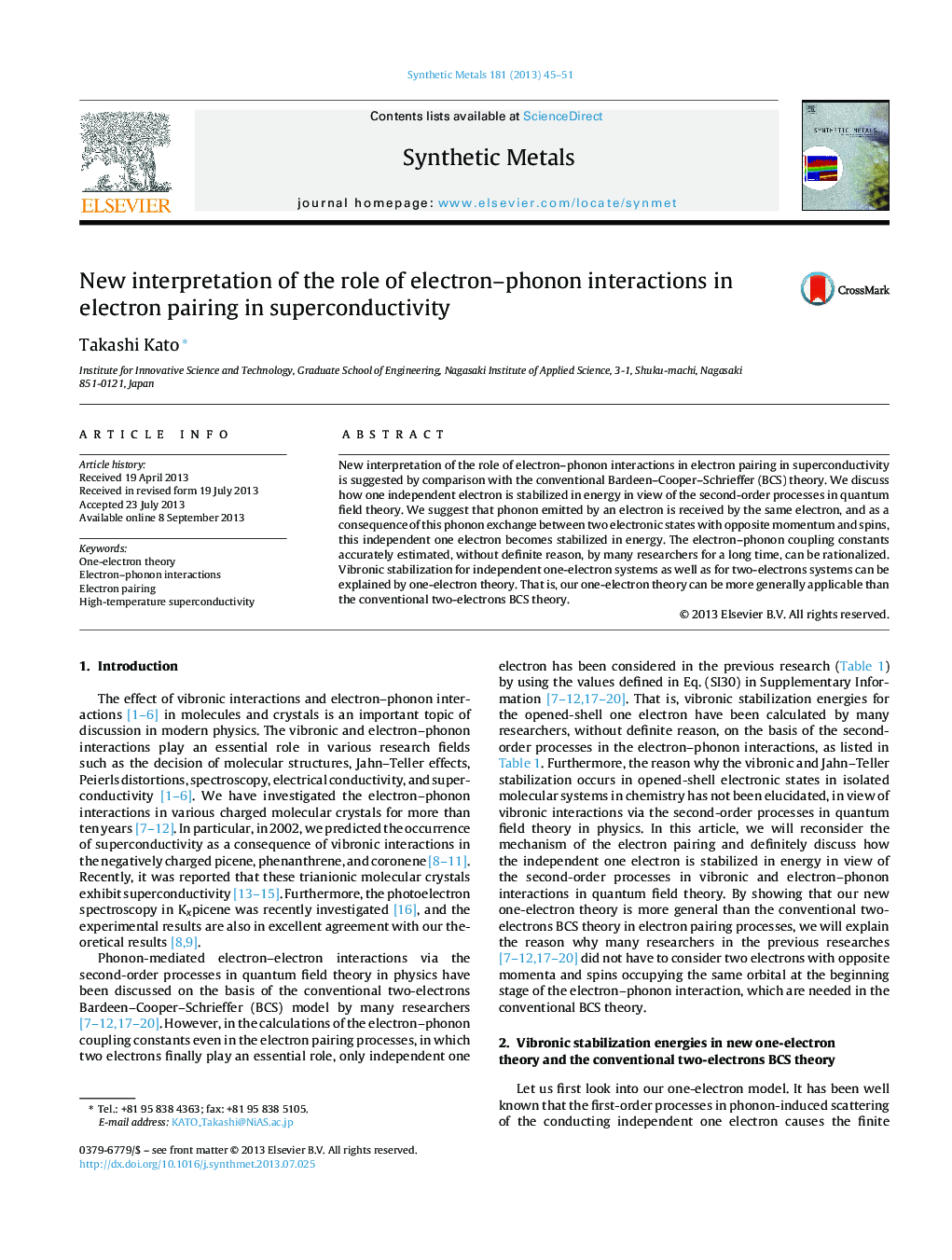| Article ID | Journal | Published Year | Pages | File Type |
|---|---|---|---|---|
| 1441205 | Synthetic Metals | 2013 | 7 Pages |
•The mechanism of the vibronic stabilization is investigated.•A phonon emitted by an electron is received by the same electron.•Independent one electron becomes stabilized via a phonon exchange.•Two electronic states with opposite momentum and spins should be considered.•Our one-electron theory is more general than conventional two-electrons theory.
New interpretation of the role of electron–phonon interactions in electron pairing in superconductivity is suggested by comparison with the conventional Bardeen–Cooper–Schrieffer (BCS) theory. We discuss how one independent electron is stabilized in energy in view of the second-order processes in quantum field theory. We suggest that phonon emitted by an electron is received by the same electron, and as a consequence of this phonon exchange between two electronic states with opposite momentum and spins, this independent one electron becomes stabilized in energy. The electron–phonon coupling constants accurately estimated, without definite reason, by many researchers for a long time, can be rationalized. Vibronic stabilization for independent one-electron systems as well as for two-electrons systems can be explained by one-electron theory. That is, our one-electron theory can be more generally applicable than the conventional two-electrons BCS theory.
Graphical abstractFigure optionsDownload full-size imageDownload as PowerPoint slide
